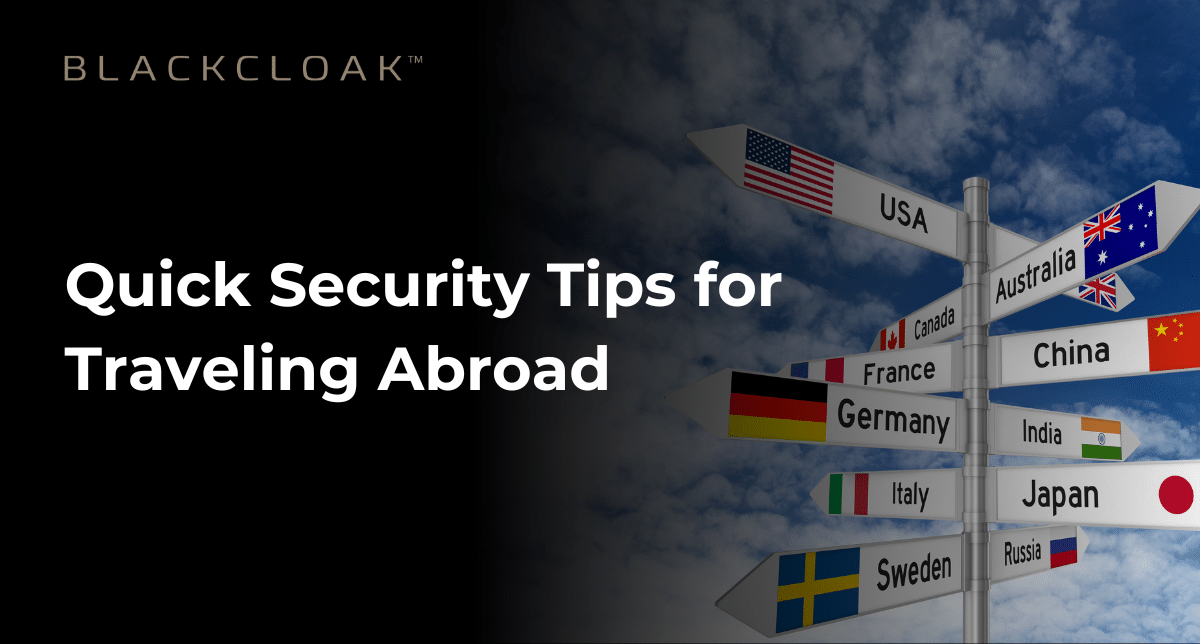Quick Security Tips for Traveling Abroad

As global citizens, we often find ourselves traveling abroad for work or leisure. However, the convenience and freedom that travel brings also come with a set of security risks. By being prepared and staying vigilant, we can mitigate these risks and ensure a safe and smooth journey.
Before You Go
Before heading off on an international trip, you should conduct a thorough review of your digital and physical security measures.
- Research your destination: Start by researching the country you are traveling to. Websites such as the U.S. State Department and Overseas Security Advisory Council offer great resources for understanding local laws, regulations, and any travel advisories specific to your destination.
- Enroll in the Smart Traveler Enrollment Program (STEP): This free service allows U.S. citizens traveling or living abroad to receive emergency alerts and makes it easier to locate you in an emergency.
- Secure your devices: Make sure that your devices are up-to-date, have software protection installed, and are protected with a strong password or biometric feature. Back them up before you depart.
- Consider a burner device: Depending on your destination, you might want to consider using a temporary device instead of your regular one.
- Protect your passwords: Use a password manager to store your passwords securely.
- Disable auto-connect: Turn off auto-connect features for Wi-Fi and Bluetooth so that you only connect to the networks you trust.
- Install a device finder: To protect against losing a device, install a device finder or enable the ‘Find My Device’ feature on your devices.
During Your Trip
While on your journey, maintaining security vigilance is crucial.
- Use an RFID holder: Protect your passport and credit cards by keeping them in an RFID holder.
- Connect safely: Use a VPN when connecting to public Wi-Fi networks.
- Keep your devices close: Always keep your devices with you and never store your computer with checked luggage.
- Consider a privacy screen: If you’ll be working on your computer in public areas, a privacy screen can help keep your information private.
- Use data blockers: Securely charge your devices by connecting to kiosks and USB wall outlets using data blockers, as these outlets can be compromised.
- Stay vigilant to phishing and smishing attacks: Be careful not to click on suspicious links in emails or text messages.
After Your Trip
Once you’re home, there are a few things you can do to ensure that any potential threats are mitigated.
- Update your devices and software: As soon as you return, make sure all your devices and software are up to date.
- Change your passwords: Reset all your passwords, especially for online accounts you may have logged into while abroad.
- Perform a backup and cleanup: Back up your trip data and remove any apps that you used solely while traveling.
- Monitor your financial statements: Keep an eye on your bank and credit card statements for any suspicious charges incurred while you were traveling.
With these simple steps, you can greatly enhance your security when traveling abroad. Safe travels!
To learn more about cyber protection for your personal digital life, click here.










